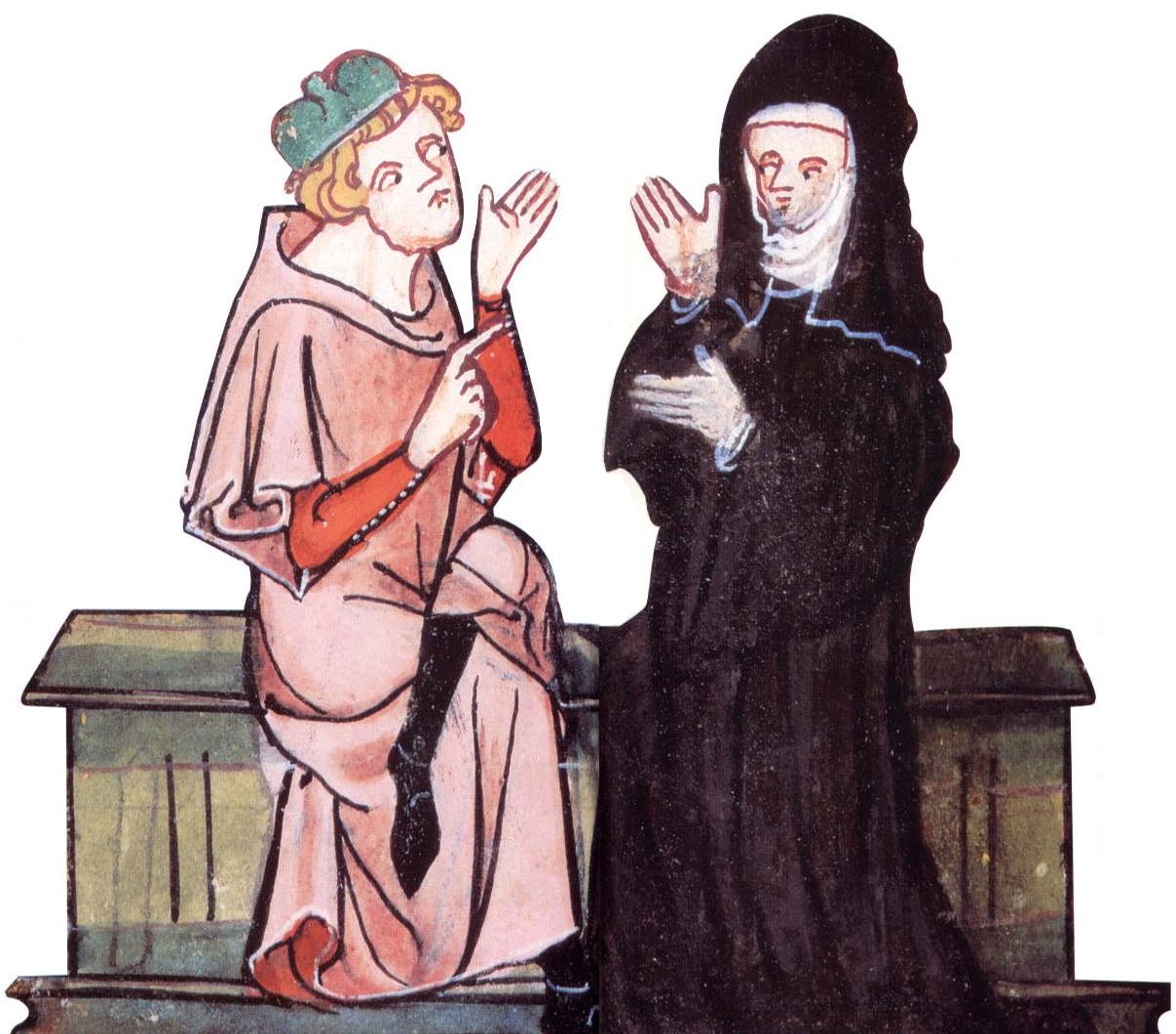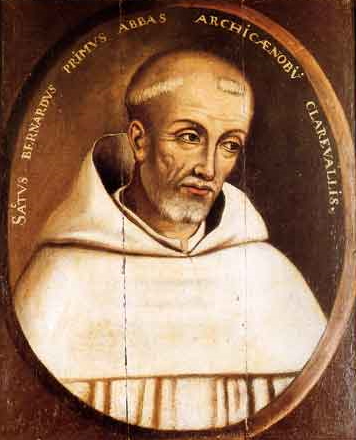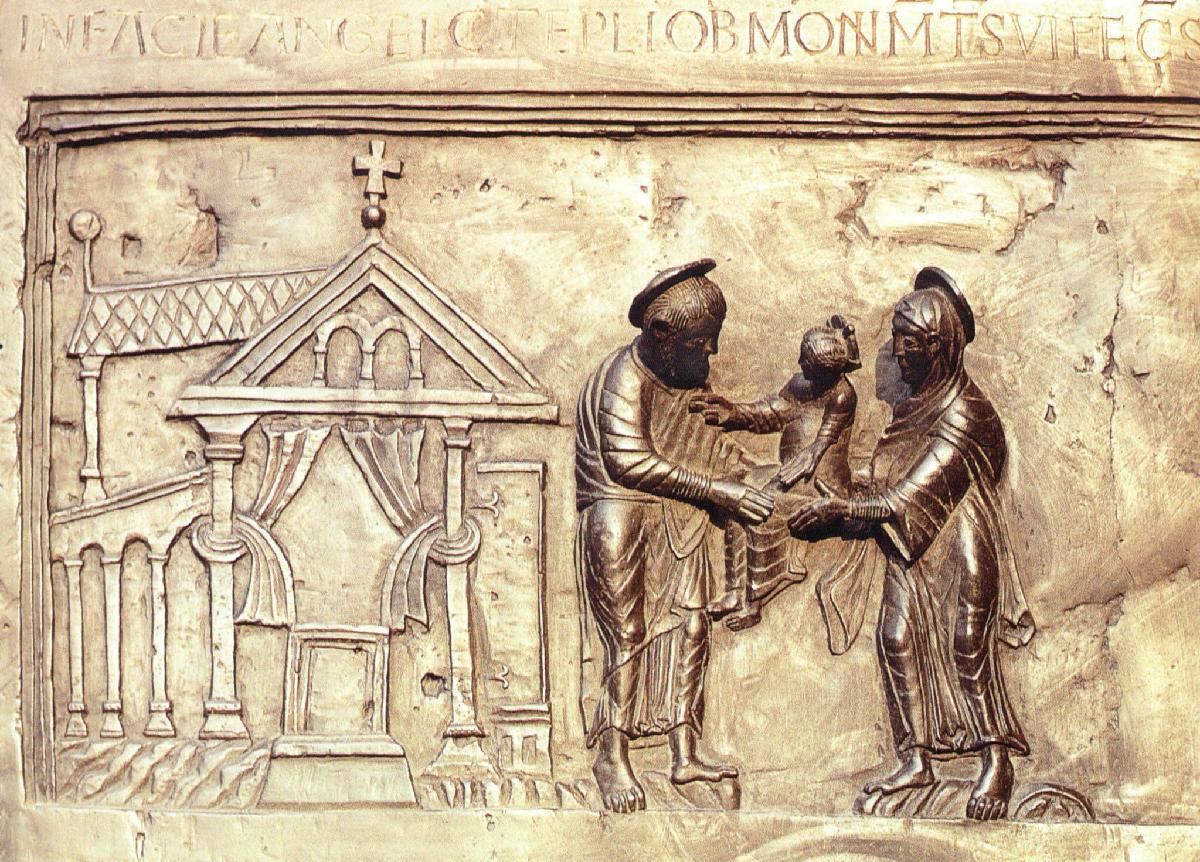7. THE HIGH MIDDLE AGES

NEW STIRRINGS IN THE WEST

NEW STIRRINGS IN THE WEST
|
A Timeline of Major Events during this period
1050s Pope Leo IX (1049-1054) disciplines the church 1070s Pope Gregory VII (1073-1085) continues the process of disciplining the church 1077 Archbishop of Canterbury Anselm begins his work Proslogion (1077-1078), clarifying church doctrine 1094 Anselm begins his work Cur Deus Homo (1094-1098), explaining the doctrine of atonement 1110s French teacher Peter Abelard leads thousands of students in critical analysis of Church doctrine (Sic et Non) ... and raises moral questions with his love of Heloise 1120s Bernard of Clairvaux tightens monastic discipline 1139 Bernard opposes Abelard publicly |
|
The textual material on the page below is drawn directly from my work, A Moral History of Western Society, © 2024, Volume One, pages 227-229.
After the mid-1000s the West began to stir from its entrenchment. It got enough of a reprieve from invasions that it was able to see some order return to life. The West began to shake off its defensiveness ... and begin to consider new possibilities. Energy was beginning to return to the European continent. In part all this new energy resulted from the fact that Europe had absorbed so much of the energies of former invaders, such as the Normans. In part it was because their enemies, in particular Islam, were having organizational problems of their own that absorbed their energies. In any case, once Europe came out from under the threat of more invaders, it amazingly quickly began to show signs of life. By around 1050 AD the tide was turning in favor of Europe. Economic and intellectual growth. Indeed, by the 1100s Europe was clearly undergoing a cultural revival of major proportions. Cities were growing up all around Western Europe, a sign of the revival of commerce and shipping. Learning centers were growing up – especially around the cathedrals of Europe's bishops. These were the early foundations of the universities that would be so vital to the redevelopment of the European intellect. The Church powers up. At the same time the Church, which was still the main cultural underpinning for all of Western society, began to regain strength under powerful popes. Notable in this regard were Leo IX (pope: 1049-1054) and Gregory VII [Hildebrand] (pope: 1073-1085). They tightened the governing structure of the church and restored some degree of discipline within the priesthood. Now Europe would move from the defensive to the offensive (one which would not cease until the twentieth century!) Early intellectual stirrings
 Anselm of Canterbury (1033-1109).
An early sign of the changing times was the work of Anselm.
Although a Christian monk, Anselm explored the nature and meaning of
life on the basis of pure reason rather than on traditional theological
intellectual foundations. He was highly critical of how logic and
language was used traditionally ... and was eager to explore the realm
of how we humans actually come to an understanding of things – both
good and bad. Among his many works, Proslogion and Cur Deus Homo?
became very influential in awakening Christian Europe to the world of
deep intellectual enquiry. Eventually he was elevated to
sainthood by both the Catholic and Anglican churches. Anselm of Canterbury (1033-1109).
An early sign of the changing times was the work of Anselm.
Although a Christian monk, Anselm explored the nature and meaning of
life on the basis of pure reason rather than on traditional theological
intellectual foundations. He was highly critical of how logic and
language was used traditionally ... and was eager to explore the realm
of how we humans actually come to an understanding of things – both
good and bad. Among his many works, Proslogion and Cur Deus Homo?
became very influential in awakening Christian Europe to the world of
deep intellectual enquiry. Eventually he was elevated to
sainthood by both the Catholic and Anglican churches. Unfortunately much of his time as archbishop of Canterbury was spent in political conflict with English King William Rufus ... then Henry I after him.
Peter Abelard (1079-1142). An individual who stands out in stark contrast to the way scholars and intellectuals were expect to act ... Peter Abelard was dazzlingly brilliant in instruction and debate on this rising matter of the nature and use of pure logic. But Abelard was also very well aware of his own brilliance, and managed to both fascinate the masses ... and irritate deeply fellow scholars, such as Anselm (early on) and then Bernard of Clairvaux (later in life) ... among many others. Thus he was forced to move often to escape the wrath of this or that individual, someone that his arrogance had alienated. Also his relationship with Héloise, with whom he birthed a son, and then got himself in deeper trouble when – as still a monk1 – he tried to fix matters. But this sparked an angry uncle of Héloise to send agents to have Abelard castrated. This in turn ruined Abelard in the eyes of the Church ... though not in the heart of Héloise, for whom her love for Abelard ran deep ... as well as his love for her. In fact their love itself became legend ... and would contribute greatly to a rising Western Humanism and its priorities.  Abelard and Héloise
 Bernard of Clairvaux (1090-1153).
Bernard was born of an aristocratic family from Burgundy ... and took
up the challenge of founding a monastry at Clairvaux (with his brothers
and even father joining him there). His work, both writings and
monastic organization became well-known ... and multitudes of young men
flocked to his monastery to be joined in his enterprise of "Benedictine
reform"(disciplining the life of a monk). Bernard of Clairvaux (1090-1153).
Bernard was born of an aristocratic family from Burgundy ... and took
up the challenge of founding a monastry at Clairvaux (with his brothers
and even father joining him there). His work, both writings and
monastic organization became well-known ... and multitudes of young men
flocked to his monastery to be joined in his enterprise of "Benedictine
reform"(disciplining the life of a monk). His incredible talents at political and social organization led him in 1128 at the Council of Troyes to write the Rules of the Knights Templar ... which became the code of honor not only for the crusaders heading to the Muslim East but also something subsequently of an honor code for Europe's ruling classes. In the realm of politics he could become very unbending ... taking up causes that would bring victory to particular parties in a Christian world caught in deep social change ... and destruction and death to the Christian groups that took an opposing position on things. For instance, he became an ardent supporter of Innocent II in his battle for the papacy with Anacletus II, the latter being elected to the position by the majority of bishops gathered in Rome, but Bernard taking Innocent's case to the princes of Northern Europe to gain their political support. Bitter civil war would result ... and end not even with Anacletus's death in 1138, but continue as the two groups that the civil conflicted had created would remain deeply divided. Bernard was also instrumental in having the Church go after the Cathars of southern France, driving them from their homes and even slaughtering them because of their "heresy." He also became a very vocal opponent of Abelard's "logical" rather than "faith-based" approach to Christianity ... organizing opposition to Abelard when Abelard wanted to debate the matter before the Second Lateran Council in 1139 (Abelard had to flee). For all of his extensive service to the Church, Bernard was canonized in 1174 as a saint by Pope Alexander III ... only 21 years after Bernard's death in 1153.
On Loving God 1The idea that monks should remain celibate or unmarried was just getting underway at the time. |

"The Presentation at the
Temple" (c. 1015)
detail in bronze from the
gate of the abbey church of St. Michael, Hildesheim (Saxony,
Germany)

 Anselm's major works or writings:
Anselm's major works or writings:
